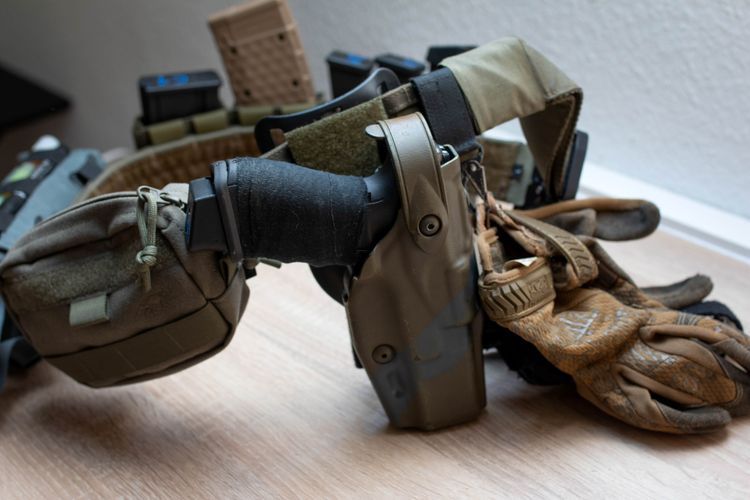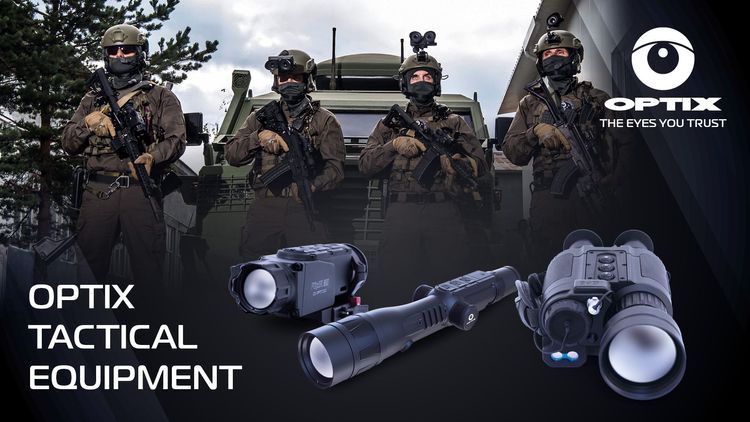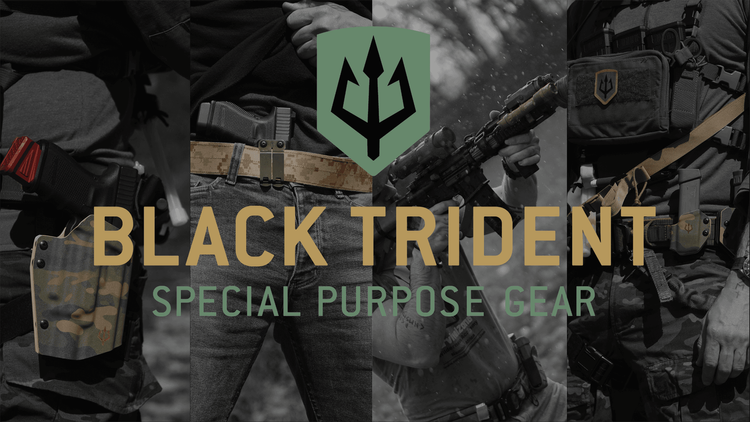The second toughest decision in a shooter's life.
Once you have decided on the manufacturer and make of your handgun, the choice of holster is probably just as challenging. In 2025, the market is full of companies and brands, so it's easy to lose track. Here is your guide to help you along.
When I was faced with the choice back then, I kept reading articles that began with the question “What do you actually need the holster for?”. Depending on the intended use, different models and materials were recommended for holsters - from tactical use to competition and hunting. Plastic holsters were often recommended for tactical use, leather holsters for hunting and nylon holsters for concealed carry. I think this approach is outdated. In my eyes, a holster has to do two things reliably: it has to hold the gun safely and release it safely at the same time. Period. It doesn't matter whether you're a competitive sports shooter or a passionate hunter in the undergrowth. High standards of security and fast access time (only here we can speak of something like "relative to the intended use") are the decisive factors that every holster must offer - in every situation, without compromise.
The "NO-GO's".
Let's get one thing straight: leather holsters are not recommended in this article. Several serious accidents in the recent past have made it abundantly clear that leather holsters pose a considerable risk if both the inner and outer materials are made of leather.

Soft leather or fabric holsters should be eliminated from your selection. Holstering is a critical moment that can be dangerous even without the holster itself. Clothing or items of clothing can quickly get caught in the trigger, which increases the risk of an unintentional shot being fired. Our aim is to minimize the critical points - not to increase them further. Another type of holster you should avoid are holsters with pressure points that are positioned more or less directly over the trigger. The best-known example is the “BLACKHAWK! Serpa”.

Although these holsters are custom-fit holsters (i.e. they are specially molded for a specific gun), they have a serious disadvantage: the gun can only be drawn after pressing a push button with the index finger. This concept has also repeatedly led to accidents in the past, because the pressure of the index finger when drawing the weapon can cause the finger to accidentally slip into the trigger guard and, in the worst case, lead to an unintentional shot being fired. Of course, it is always a “user error” - it is not the holster itself that causes the shot to break. Nevertheless, holsters of this type are strongly discouraged, as they potentially add more hazards than they reduce.
Modern holsters made from Kydex.
Thermoplastic acrylic polyvinyl chloride - that is the technical term for Kydex. This plastic becomes mouldable when heated and is now the standard for holsters in almost every application - from police and military to civilian security forces and private users. The reason is obvious: the material is weather-resistant, abrasion-resistant and retains its shape even after decades. What's more, Kydex can be individually adapted, which, in addition to its high stability, also enables flexible design - for example in terms of color, shape and design.
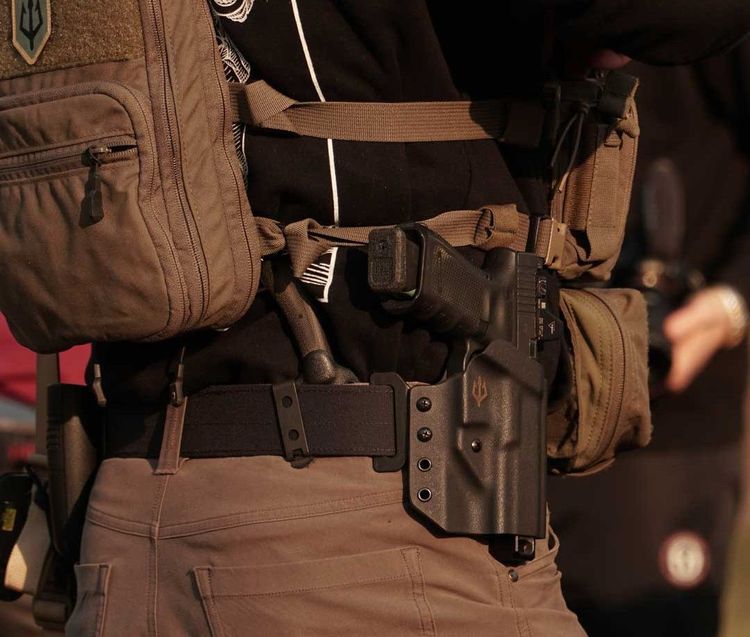
In Europe, “Black Trident” and “T.Rex Arms” are among the best-known suppliers, who continue to impress with new ideas and high-quality craftsmanship. They can be looped or slid onto belts using various adapter systems. The holsters are manufactured in such a way that either a certain amount of pulling resistance prevents the equipment from falling out or an additional external safety device has to be “overcome”. One of the best comes from the USA, from “Safariland”. The so-called “ALS” and the “SLS” system.
But before we get to that - do you even need an additional safety? In concealed carry - as used by hunters, professional gun carriers and authorities (or where possible: in civilian self-protection) - the natural draw resistance of the holster is sufficient as a “safety”. In such situations, it is absolutely enough to adjust the draw resistance so that the weapon has a certain amount of retention. As long as the trigger area and magazine release are reliably concealed - you are good to go.
However, for open carry (an exception here is the IPSC/USPSA sector - where holsters without a safety are of course popular), a holster with at least one additional safety level, beyond the draw resistance, is absolutely recommended. For such applications, the ALS system could be the ideal solution - because it prevents unauthorized access to a reasonable extent and does not cause any loss of time when drawing the weapon.
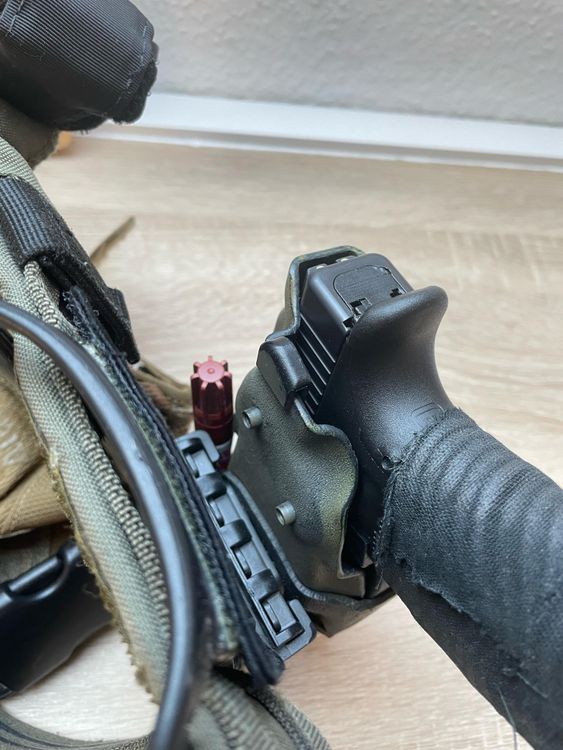
Safariland's ALS and SLS.
ALS is the "Automatic Locking System" - This consists of a plastic bar that grips automatically when the gun is holstered and is then unlocked by (thumb) pressure when the gun is drawn. The “Master Grip” does not need to be changed.
SLS is the "Self Locking System" - This is a plastic frame that must be closed by the shooter after holstering. Here the shooter's “master grip” must be adjusted during the drawing process, the thumb must first land on the frame and push it to the side.
And the international reputation of the US manufacturer proves that such holsters no longer have to be complicated and time-consuming to operate. The familiar silhouettes of Safariland holsters can now be seen on all relevant hips: US Special Operations, European Special Operations and police units worldwide procured Safariland holsters, often with ALS or SLS safeties.

Because: With a little practice and training, even Level 3 holsters (i.e. Draw Resistance + ALS + SLS) are not much slower to draw than pure Level 1 holsters, such as those often found in IPSC/USPSA. Today we find more and more manufacturers who offer the option to order the Safariland SLS system with their Kydex holsters or who market systems similar to the ALS. Of course, this makes sense primarily in police or police-like contexts (jobs with a tendency to encounter violent opponents at close range). In my opinion, Safariland has revolutionized the holster market with the ALS".
The ability to draw almost as fast with an ALS holster as with a pure Kydex holster still fascinates me today - years later.
Mission success requires tactical equipment you can trust in any environment. OPTIX Tactical Equipment ensures reliability and performance in every operation.
Black Trident: Special Purpse Gear & Training. Your Gear is our responsibility. Now, your training is too.

